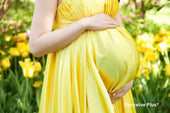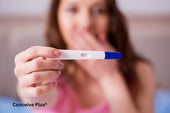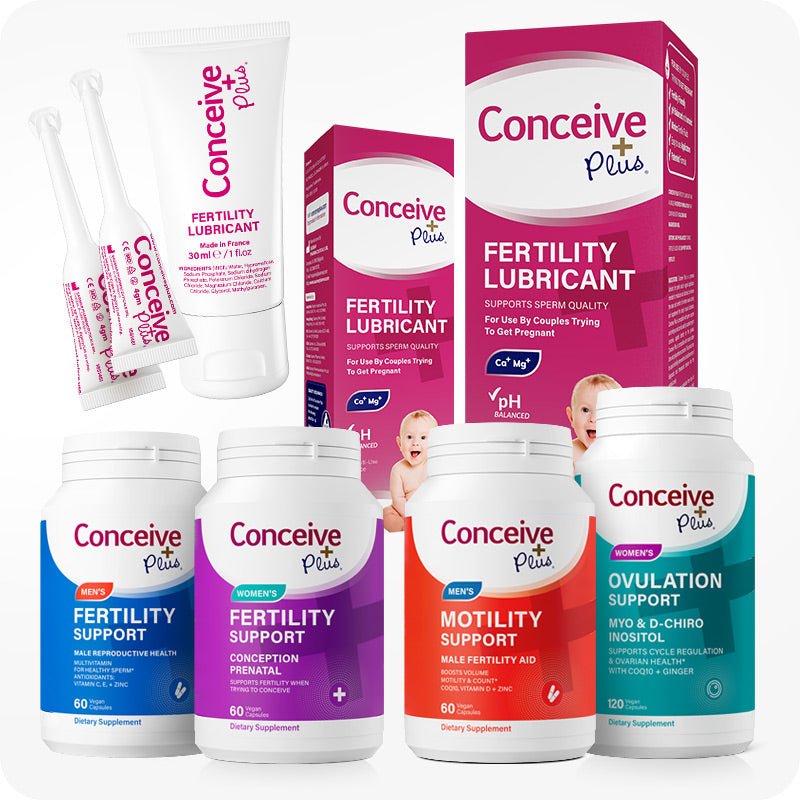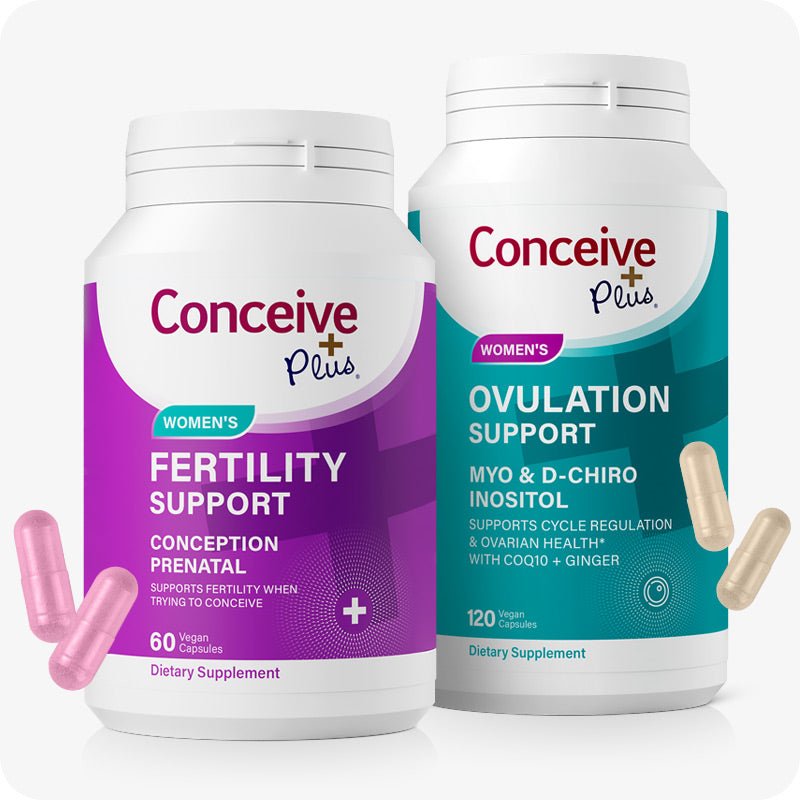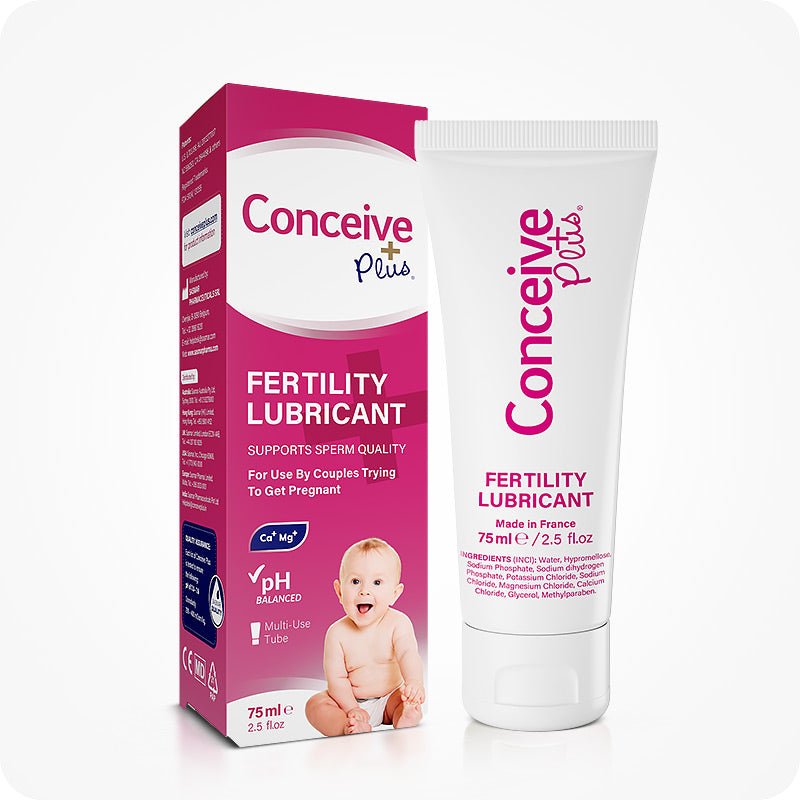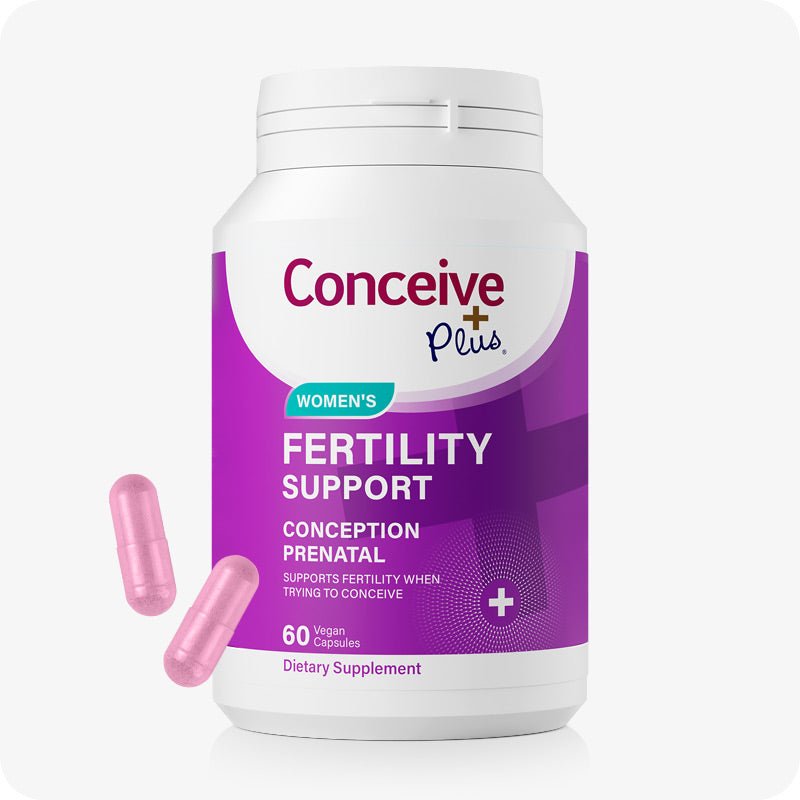Best Month to Get Pregnant: Seasons and Conception

Bringing a new life into the world is one of the most transformative decisions a couple can make. Along with the excitement and anticipation, there often comes a host of questions about timing and readiness. People frequently wonder if there is a favorable season, a perfect climate, or a specific window in which fertility peaks. Questions such as when is the best month to get pregnant and the best time to have a baby arise, as do thoughts about the impact of weather, personal comfort, and health considerations. This article offers an in-depth exploration of how seasons can influence conception and pregnancy, helping you determine your own best time to be pregnant and even evaluate intriguing ideas like getting pregnant in July or other months. By weighing various factors—including physiology, environment, and lifestyle—you can make a more informed decision about what might be the best month to conceive.
The Seasonal Angle: Does It Really Matter?
Discussions about whether certain months are more advantageous for conception often revolve around environmental factors like temperature, sunlight, and flu season. Some speculate that warmer months may encourage outdoor activity, a better mood, and enhanced vitamin D levels—factors that can support overall fertility. Others argue that cooler months keep you sheltered from harsh external conditions, reducing stress levels and enabling greater focus on well-being. Ultimately, whether or not one specific month outshines others depends on individual circumstances, geographic location, and personal health [1].
Several studies conducted over the last decade provide insights into seasonal conception trends. For instance, research from various national health institutes suggests that conception rates can spike at different times of year, likely reflecting holidays, increased social gatherings, and general mood changes [2]. However, this data alone can be misleading, as it often doesn’t account for personal health profiles, fertility challenges, and lifestyle variations. Moreover, while population-level data might show that certain months have higher rates of conception, that doesn’t necessarily guarantee the same outcome for everyone.
Climate and Comfort: Practical Considerations
When attempting to pinpoint the best time to have a baby, one crucial aspect many couples consider is the mother’s comfort during pregnancy. The duration of gestation is typically around 40 weeks, so conceiving in a particular month means the due date will likely fall in a subsequent season. For example, if you conceive in early spring, you’ll likely be carrying through the warmer summer months and give birth in late fall or early winter. Conversely, conceiving in late fall may place your third trimester in late summer.
- Hot Summers: Pregnancy during extremely high temperatures can be challenging. Higher risks of dehydration, heat stroke, or general discomfort from swelling might become more pronounced. Staying cool, hydrated, and well-rested is essential for both mother and baby.
- Cold Winters: Harsh winter months can lead to an increased risk of colds, the flu, and seasonal affective disorder (SAD). Limited sunlight may reduce vitamin D levels, although supplementation can help mitigate this [3]. On the upside, cooler weather can be more comfortable for many pregnant individuals, especially in the later stages of pregnancy when body temperature is already elevated.
- Allergy Seasons: Some prospective parents worry about pollen-heavy months if they have allergies. Sneezing, congestion, or any respiratory discomfort can add another layer of stress during pregnancy. While this concern doesn’t generally override more critical health factors, it’s worth noting if severe allergies are in play.
Each season brings its set of perks and challenges. Therefore, determining the best month to conceive requires balancing personal comfort, local climate patterns, and the availability of healthcare or family support during those months.
Timing in Relation to Work and Lifestyle
Beyond weather, a significant factor influencing a couple’s decision about when is the best time to have a baby is practical life considerations. Parental leave policies, work commitments, and financial readiness all play vital roles in deciding the optimal time to grow a family.
- Work Cycles and Parental Leave: Some professions have busy seasons, such as accountants facing tax deadlines or teachers who have less flexibility during the academic year. If you have a better window of opportunity for taking extended leave or find it easier to manage prenatal appointments at certain times, that might influence your decision more than weather or temperature.
- Financial Planning: Babies come with a list of new expenses, from medical bills to nursery essentials. If you have a bonus season or a period with predictable income, you might consider aligning conception with greater financial stability.
- Social and Family Support: Sometimes, extended family members have more availability to help during certain months. If your parents or close relatives have specific times of the year when they can offer hands-on assistance, scheduling your due date in alignment with their support availability can lighten the load.
These non-health factors can be as influential, if not more, than purely environmental considerations. Comfort, health, and day-to-day responsibilities all converge to create a complex web of factors determining your personal best time to be pregnant.
The Role of Vitamin D and Sunlight
Sunlight is a vital source of vitamin D, an essential nutrient that supports bone health for both mother and child. Some research indicates that more sun exposure can correspond to slightly elevated vitamin D levels, which are linked to improved fertility and reduced risks of certain complications. For individuals living in regions with long, dark winters, considering a conception window that allows for a portion of pregnancy during sunnier months could be beneficial. However, modern solutions like vitamin D supplementation and specialized lighting can mitigate seasonal deficiencies, so it’s not necessary to rely solely on natural sunlight [4].
It’s also important to remember that excessive heat and sun exposure can lead to dehydration or overheating, both of which can be harmful during pregnancy. Striking a balance between obtaining adequate vitamin D and remaining comfortable in hot climates is key.
Health and Wellness: Medical Factors to Consider
If you are actively deciding which month to aim for pregnancy, it’s also wise to consider the following medical and wellness factors:
- Viral and Flu Seasons: High incidences of flu and other respiratory infections typically occur in cooler months, which might pose risks for pregnant individuals. Planning to avoid late pregnancy during peak flu season may be beneficial, though vaccines and good hygiene practices provide protective measures.
- Preexisting Medical Conditions: If you have conditions such as asthma, allergies, or chronic illnesses, it may be worthwhile to target months when your symptoms are less severe. This approach can make pregnancy more comfortable overall.
- Fertility Cycles: While month-to-month differences can capture our attention, remember that age and overall reproductive health generally have a more substantial impact on conception outcomes than any given season. Regular consultations with a healthcare professional can help you optimize timing, monitor fertility markers, and address challenges early on [5]. While considering the best month to conceive, it’s also worth exploring the better age to get pregnant, as age plays a significant role in fertility and overall pregnancy health
- Prenatal Care Availability: Certain holidays or peak vacation periods might complicate regular prenatal visits if clinics are understaffed or healthcare providers are on leave. Making sure your medical support system is fully accessible during critical weeks of pregnancy can be advantageous.
Emotional and Psychological Factors
Emotions run high during family planning, and mental health is a crucial piece of the puzzle. For some individuals, a vibrant spring or warm summer lifts moods and combats feelings of anxiety. Others might prefer the cozy environment of winter, finding peace and reduced social pressures. Emotional well-being profoundly impacts fertility, stress levels, and the overall pregnancy experience.
- Stress Management: If you know a particular time of year tends to be stressful—such as the end-of-year holidays—conceiving during that period may not be the most nurturing choice. Stress can influence ovulation and hormonal balance.
- Holiday Pressures: Family gatherings, financial pressures around gift-giving, and increased social obligations can be overwhelming. On the other hand, a supportive festive environment can sometimes boost morale and create a loving backdrop for pregnancy announcements. Personal circumstances will dictate whether you find the holiday season helpful or stressful.
Keeping open communication lines with your partner, setting realistic expectations, and ensuring emotional readiness can significantly enhance your journey.
Spotlight on Specific Months: Is “Getting Pregnant in July” Different?
While the notion of getting pregnant in July occasionally appears in popular media or personal anecdotes, there is no universal scientific consensus that July is inherently superior to other months. Some people argue that conceiving in mid-summer results in a spring baby, which aligns with moderate weather conditions. Others appreciate that a summer conception can allow them to go through early pregnancy during a time that might be less hectic at work or more social, possibly lifting spirits.
However, each month has its own distinctive traits. For instance, conceiving in July in the Northern Hemisphere means experiencing later pregnancy in late winter and giving birth toward the end of spring. That might be ideal for a region where winters are relatively mild, but the same might not hold true for those facing more extreme conditions. In the Southern Hemisphere, this logic flips due to seasonal differences. Ultimately, the core advice remains consistent: evaluate your climate, support system, and health profile rather than simply jumping to a single month as a “magic bullet.”
Fertility Planning: Steps for Success
Whether you’re considering best time to have a baby for financial, emotional, or health-related reasons, the following strategies can support any plan:
- Preconception Counseling: Speak with a healthcare professional to understand your fertility health, discuss any preexisting medical conditions, and ensure you have a plan for supplements or dietary changes.
- Healthy Lifestyle: Maintaining a balanced diet, engaging in moderate exercise, and avoiding harmful substances significantly improve your chances of a smooth conception and pregnancy—regardless of the month.
- Tracking Ovulation: Using ovulation predictor kits, basal body temperature charts, or fertility tracking apps can boost your understanding of peak fertility windows. Pinpointing ovulation times is more likely to result in conception success than relying solely on monthly or seasonal generalizations. For those looking to enhance their fertility journey, incorporating Conceive Plus Ovulation Support into your routine can help regulate ovulation, balance hormones, and ease menstrual discomfort, making it a valuable addition to your conception plan.
- Monitoring Mental Health: Hormonal changes can be stressful, and the emotional rollercoaster of trying to conceive can take a toll on your well-being. Seek therapy or counseling if needed, and lean on supportive friends and family.
- Plan for Flexibility: Even the best plans can be upended by unpredictable life events, changes in health, or shifts in priorities. Allowing some flexibility ensures less disappointment and a more positive mindset throughout the journey.
The Bottom Line
In the final analysis, multiple elements shape the decision on what might constitute the best month to get pregnant. Personal comfort, local climate, work schedules, health considerations, and emotional readiness all play a part. There is no single, universally ideal time, as each family’s circumstances and preferences differ. Some may enjoy going through pregnancy in cooler months, while others might thrive in the warmth of summer. Ultimately, prioritizing overall well-being—both physical and emotional—remains the most reliable guide. By considering your lifestyle, consulting healthcare professionals, and monitoring fertility accurately, you can optimize your chances of a healthy pregnancy experience, regardless of the calendar date.
When it comes down to it, the “best” time to conceive is the one that aligns with your unique situation, satisfies your comfort needs, and supports a healthy pregnancy. As you weigh factors ranging from weather patterns to emotional support systems, remember that each family’s journey is unique. And while there might be an abundance of opinions on the topic, only you and your partner can determine what is right for you. In the end, understanding and embracing your personal desires and practical realities is the true key to deciding the best month to get pregnant.
References:
- Ahn SH, Lee I, Cho S, Kim HI, Baek HW, Lee JH, Park YJ, Kim H, Yun BH, Seo SK, Park JH, Choi YS, Lee BS. Predictive Factors of Conception and the Cumulative Pregnancy Rate in Subfertile Couples Undergoing Timed Intercourse With Ultrasound. Front Endocrinol (Lausanne). 2021 Apr 15;12:650883. doi: 10.3389/fendo.2021.650883. PMID: 33935968; PMCID: PMC8082069.
- Martinez-Bakker Micaela, Bakker Kevin M., King Aaron A. and Rohani Pejman 2014Human birth seasonality: latitudinal gradient and interplay with childhood disease dynamicsProc. R. Soc. B.28120132438. http://doi.org/10.1098/rspb.2013.2438
- Meesters Y, Gordijn MC. Seasonal affective disorder, winter type: current insights and treatment options. Psychol Res Behav Manag. 2016 Nov 30;9:317-327. doi: 10.2147/PRBM.S114906. PMID: 27942239; PMCID: PMC5138072.
- Fung JL, Hartman TJ, Schleicher RL, Goldman MB. Association of vitamin D intake and serum levels with fertility: results from the Lifestyle and Fertility Study. Fertil Steril. 2017 Aug;108(2):302-311. doi: 10.1016/j.fertnstert.2017.05.037. Epub 2017 Jun 16. PMID: 28629584; PMCID: PMC5545066.
- Delbaere I, Verbiest S, Tydén T. Knowledge about the impact of age on fertility: a brief review. Ups J Med Sci. 2020 May;125(2):167-174. doi: 10.1080/03009734.2019.1707913. Epub 2020 Jan 22. PMID: 31964217; PMCID: PMC7721003.
Buy conception products online at Conceive Plus, the fertility brand trusted by couples and healthcare professionals in over 70 countries! Order premium conception supplements on our website today, the best conception kits for sale for TTC couples.






